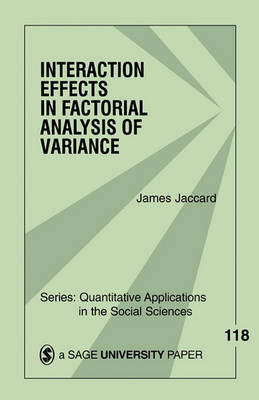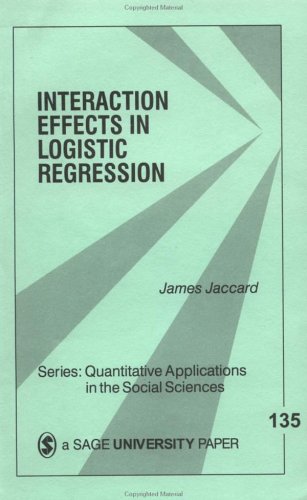Quantitative Applications in the Social Sciences
3 total works
Interaction Effects in Multiple Regression
by James Jaccard, Robert Turrisi, and Choi K. Wan
Published 10 April 1990
A synthesis of literature previously scattered across several disciplines, this volume addresses fundamental issues in the analysis of interaction effects in multiple regression with examples from different fields in the social sciences. It is organized around three core questions: one, given sample data can we conclude that there is an interaction effect in a population? Two, if so what is the strength of that effect? And three, what is the nature of that effect?
Although factorial analysis is widely used in the social sciences, there is some confusion as to how to use the techniqueÆs most powerful featureùthe evaluation of interaction effects. Written to remedy this situation, author James Jaccard clearly describes the issues underlying the effective analysis of interaction in factorial designs. The book begins by describing different ways of characterizing interactions in ANOVA, elucidating both moderator conceptualizations of interactions as well as that of residualized means. After discussing interaction effects using traditional hypothesis testing approaches, he then covers alternative analytic frameworks that focus on effect size methodology and interval estimation. Jaccard summarizes criticisms of classical null hypothesis testing and offers practical guidelines for pursuing magnitude estimation and interval estimation approaches. In addition, Jaccard shows applications of all three approaches to the analysis of interactions using a complete numerical example; discusses strategies for effectively exploring interactions in higher order designs and designs with more than two levels per factor; highlights the central role of single degree of freedom contrasts and provides numerous illustrations for formulating such contrasts; considers simplified approaches to statistical power analysis; describes approaches to consider when statistical assumptions are not met; explicates the case of unequal sample sizes; considers the impact of measurement error; and demonstrates computer applications. Readers who have wanted a book that fully discusses different conceptualizations of interactions as well as one that provides practical guidelines for analyzing complex interactions will find this volume the one that they have been seeking.
This book provides an introduction to the analysis of interaction effects in logistic regression by focusing on the interpretation of the coefficients of interactive logistic models for a wide range of situations encountered in the research literature. The volume is oriented toward the applied researcher with a rudimentary background in multiple regression and logistic regression and does not include complex formulas that could be intimidating to the applied researcher.


